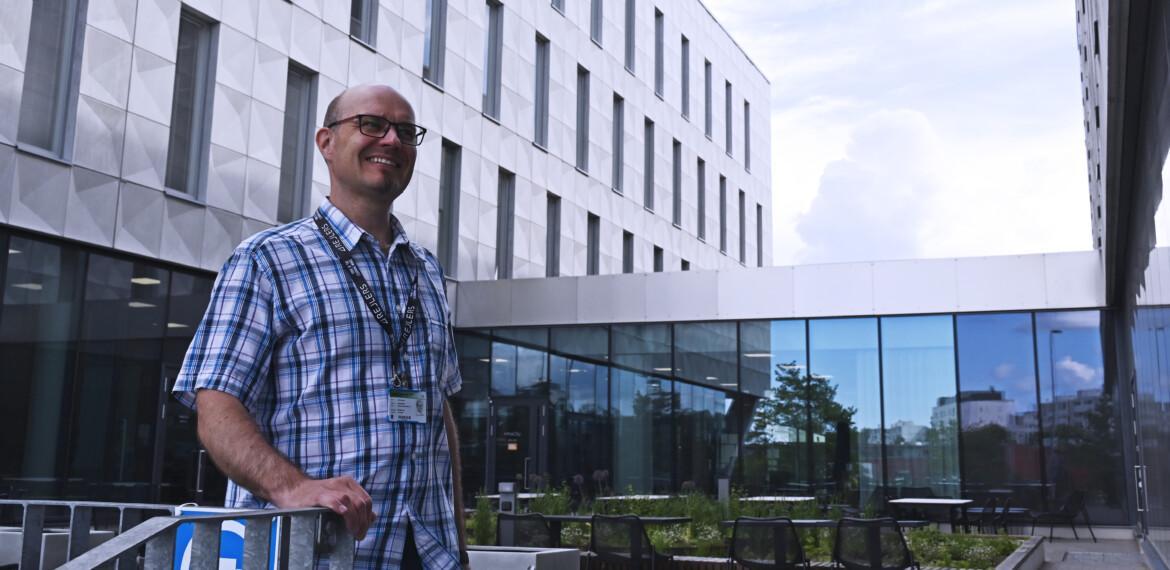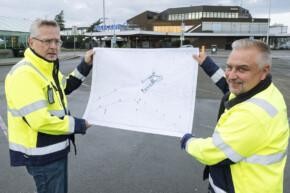Invisible mission
Traces of electrical wiring designer Antti Koponen’s work should not be visible anywhere, but nevertheless all electrical appliances should function. Now he tells us how this is achieved in the Port or Turku’s new ship terminal.

When Engineer Antti Koponen from Rejlers first saw the drawings of Ferry Terminal Turku (FTT), he thought that the building is architecturally impressive. Its glass walls rose to heights and reflected the sea to the city. The roof of the terminal descended obliquely in several different directions.
Quite soon Mr Koponen switched to look at the building through the eyes of a building technology engineer. It began to look slightly different.
”Large glass and aluminium surfaces on façades are challenging in terms of electrical wiring design. How do you attach wires to the glass through which everything can be seen? It is also difficult to attach anything to a steel structure. Building technology should not be visible anywhere, not even light fixtures, just the light on the floor”, says Mr Koponen, head of the electrical wiring design unit in Turku.
The visual design of FTT has been thought over to the smallest detail, as even the wall sockets, fire detectors and other equipment related to safety need to be of a specific colour. The more commonly used white, black and grey ones do not fit there.
Electrical wiring design was made functional
“The ceiling of FTT is oblique in a number of places, which means that the building technology shelves can’t be made to go straight as usual. Oblique structures increase challenges in modelling.”
The mission is not, however, by any means impossible.
“Electricity goes uphill as well”, Mr Koponen says and chuckles.
Rejlers and Mr Koponen have diverse and long experience in the field. Big hospital projects, such as the T-hospital building of the Turku University Hospital, were more challenging than the harbour terminal.
Mr Koponen met the architect who designed FTT and together they ensured that electrical wiring design is functional from the points of view of the architect, engineer and users.
A good time for tendering
At the start of June 2024, Mr Koponen had completed the plans to be sent to electricity contractors for tendering.
”I believe that FTT attracts interest among contractors, because it’s a visible and significant project. Construction industry is not booming right now, so this is a good time for tendering in that regard as well: we will certainly receive offers.”
The installation of electrical wires may start in practice in summer 2025.
Text and photo: Sari Järvinen
Rejlers
- Responsible for building electrical wiring from Turku Energia’s network to Ferry Terminal Turku and onwards from there.
- Takes care of e.g. wall sockets, light fixtures, telecommunication systems, telecommunication networks, fire detectors and other electrical wiring related to safety.
- Makes a reservation for solar panels in case they will be installed afterwards.
- Dimensions a diesel-powered generator in case of power cuts.
- Technology industry design and consultation company that has over 1,000 employees in Finland. Rejlers Finland is part of Rejlers Group which is listed in the Stockholm Stock Exchange.


